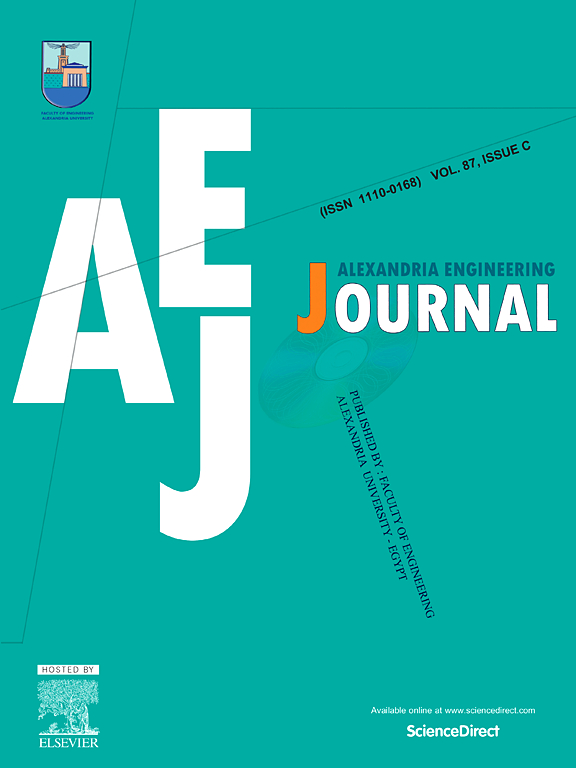Topic-aware neural attention network for malicious social media spam detection
IF 6.2
2区 工程技术
Q1 ENGINEERING, MULTIDISCIPLINARY
引用次数: 0
Abstract
Social media platforms, such as Facebook and X (formally known as Twitter), have become indispensable tools in today's society because they facilitate social discussion and information sharing. This feature makes social networks more attractive for spammers who intentionally spread fake messages, post malicious links and spread rumours. Recently, several machine learning methods have been introduced for social network malicious spam classification. However, most existing methods generally rely on handcrafted features and traditional embedding models, which are relatively less effective. Therefore, inspired by the success of the neural attention network, we propose an interactive neural attention-based method for malicious spam detection by integrating long short-term memory (LSTM), topic modelling, and the BERT technique. In the proposed approach, first, we employed the LSTM encoder, which was integrated with the Twitter latent Dirichlet allocation (LDA) model via an interactive attention mechanism to jointly learn local content and global topic representations. Second, to further learn the contextualized features of texts, the model was further integrated with the BERT technique. Last, the Softmax function was then applied at the output layer for the final spam classification. A series of experiments were conducted utilizing two real-world datasets to evaluate the model. Using dataset 1, the proposed model outperformed the baseline techniques, with average improvements in recall, precision, and F1 and accuracies of 17.54 %, 6.19 %, 11.91 %, and 12.27 %, respectively. In addition, the proposed model performed well for the second dataset and obtained average gains of 11.81 %, 4.38 %, 8.12, and 7.42 in terms of recall, precision, F1, and accuracy, respectively.
用于恶意社交媒体垃圾邮件检测的主题感知神经注意网络
Facebook 和 X(正式名称为 Twitter)等社交媒体平台已成为当今社会不可或缺的工具,因为它们促进了社会讨论和信息共享。这一特点使得社交网络对故意传播虚假信息、发布恶意链接和散布谣言的垃圾邮件发送者更具吸引力。最近,有几种机器学习方法被引入到社交网络恶意垃圾邮件分类中。然而,现有的大多数方法一般都依赖于手工制作的特征和传统的嵌入模型,效果相对较差。因此,受神经注意网络成功经验的启发,我们提出了一种基于交互式神经注意的恶意垃圾邮件检测方法,该方法综合了长短期记忆(LSTM)、主题建模和 BERT 技术。在所提出的方法中,首先,我们采用了 LSTM 编码器,并通过交互式注意力机制将其与 Twitter 潜在 Dirichlet 分配(LDA)模型相结合,以共同学习局部内容和全局话题表征。其次,为了进一步学习文本的上下文特征,该模型进一步与 BERT 技术相结合。最后,在输出层应用 Softmax 函数进行最终的垃圾邮件分类。我们利用两个真实世界的数据集进行了一系列实验,以评估该模型。利用数据集 1,所提出的模型在召回率、精确度、F1 和准确度方面的平均改进分别为 17.54 %、6.19 %、11.91 % 和 12.27 %,优于基线技术。此外,所提出的模型在第二个数据集上也表现出色,在召回率、精确度、F1 和准确度方面的平均收益分别为 11.81 %、4.38 %、8.12 和 7.42 %。
本文章由计算机程序翻译,如有差异,请以英文原文为准。
求助全文
约1分钟内获得全文
求助全文
来源期刊

alexandria engineering journal
Engineering-General Engineering
CiteScore
11.20
自引率
4.40%
发文量
1015
审稿时长
43 days
期刊介绍:
Alexandria Engineering Journal is an international journal devoted to publishing high quality papers in the field of engineering and applied science. Alexandria Engineering Journal is cited in the Engineering Information Services (EIS) and the Chemical Abstracts (CA). The papers published in Alexandria Engineering Journal are grouped into five sections, according to the following classification:
• Mechanical, Production, Marine and Textile Engineering
• Electrical Engineering, Computer Science and Nuclear Engineering
• Civil and Architecture Engineering
• Chemical Engineering and Applied Sciences
• Environmental Engineering
 求助内容:
求助内容: 应助结果提醒方式:
应助结果提醒方式:


